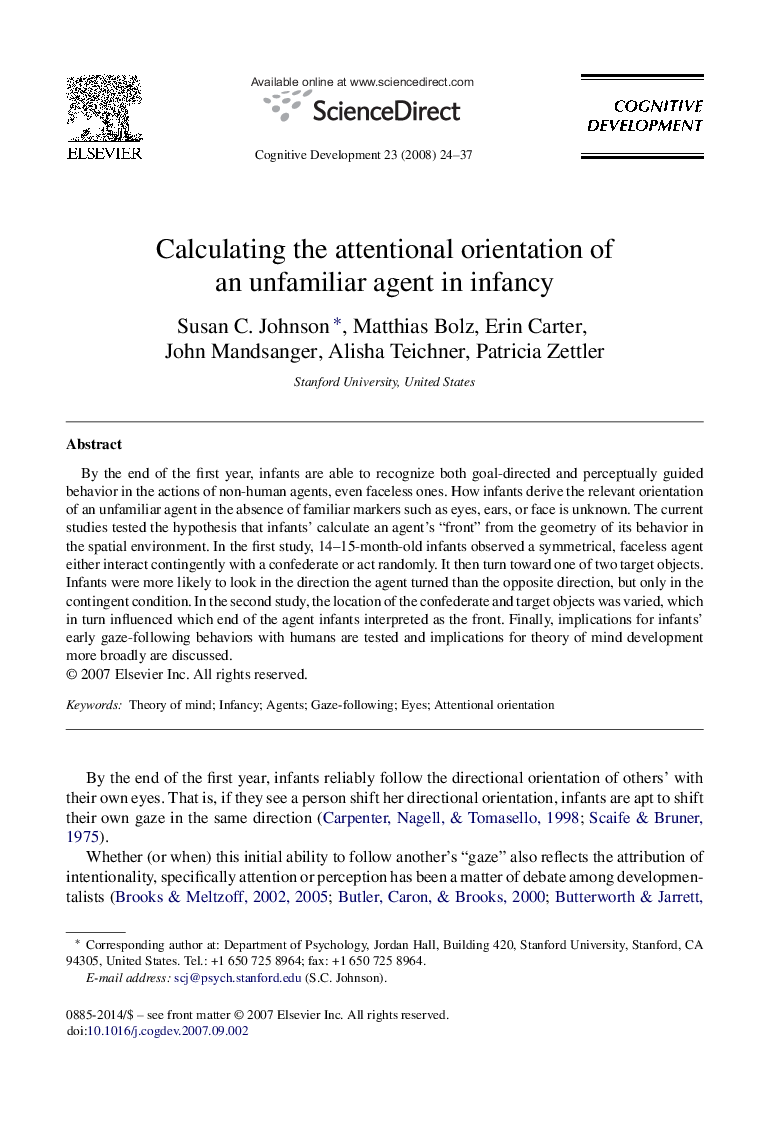| کد مقاله | کد نشریه | سال انتشار | مقاله انگلیسی | نسخه تمام متن |
|---|---|---|---|---|
| 916730 | 918883 | 2008 | 14 صفحه PDF | دانلود رایگان |
عنوان انگلیسی مقاله ISI
Calculating the attentional orientation of an unfamiliar agent in infancy
دانلود مقاله + سفارش ترجمه
دانلود مقاله ISI انگلیسی
رایگان برای ایرانیان
کلمات کلیدی
موضوعات مرتبط
علوم انسانی و اجتماعی
روانشناسی
روانشناسی رشد و آموزشی
پیش نمایش صفحه اول مقاله

چکیده انگلیسی
By the end of the first year, infants are able to recognize both goal-directed and perceptually guided behavior in the actions of non-human agents, even faceless ones. How infants derive the relevant orientation of an unfamiliar agent in the absence of familiar markers such as eyes, ears, or face is unknown. The current studies tested the hypothesis that infants' calculate an agent's “front” from the geometry of its behavior in the spatial environment. In the first study, 14-15-month-old infants observed a symmetrical, faceless agent either interact contingently with a confederate or act randomly. It then turn toward one of two target objects. Infants were more likely to look in the direction the agent turned than the opposite direction, but only in the contingent condition. In the second study, the location of the confederate and target objects was varied, which in turn influenced which end of the agent infants interpreted as the front. Finally, implications for infants' early gaze-following behaviors with humans are tested and implications for theory of mind development more broadly are discussed.
ناشر
Database: Elsevier - ScienceDirect (ساینس دایرکت)
Journal: Cognitive Development - Volume 23, Issue 1, January 2008, Pages 24-37
Journal: Cognitive Development - Volume 23, Issue 1, January 2008, Pages 24-37
نویسندگان
Susan C. Johnson, Matthias Bolz, Erin Carter, John Mandsanger, Alisha Teichner, Patricia Zettler,